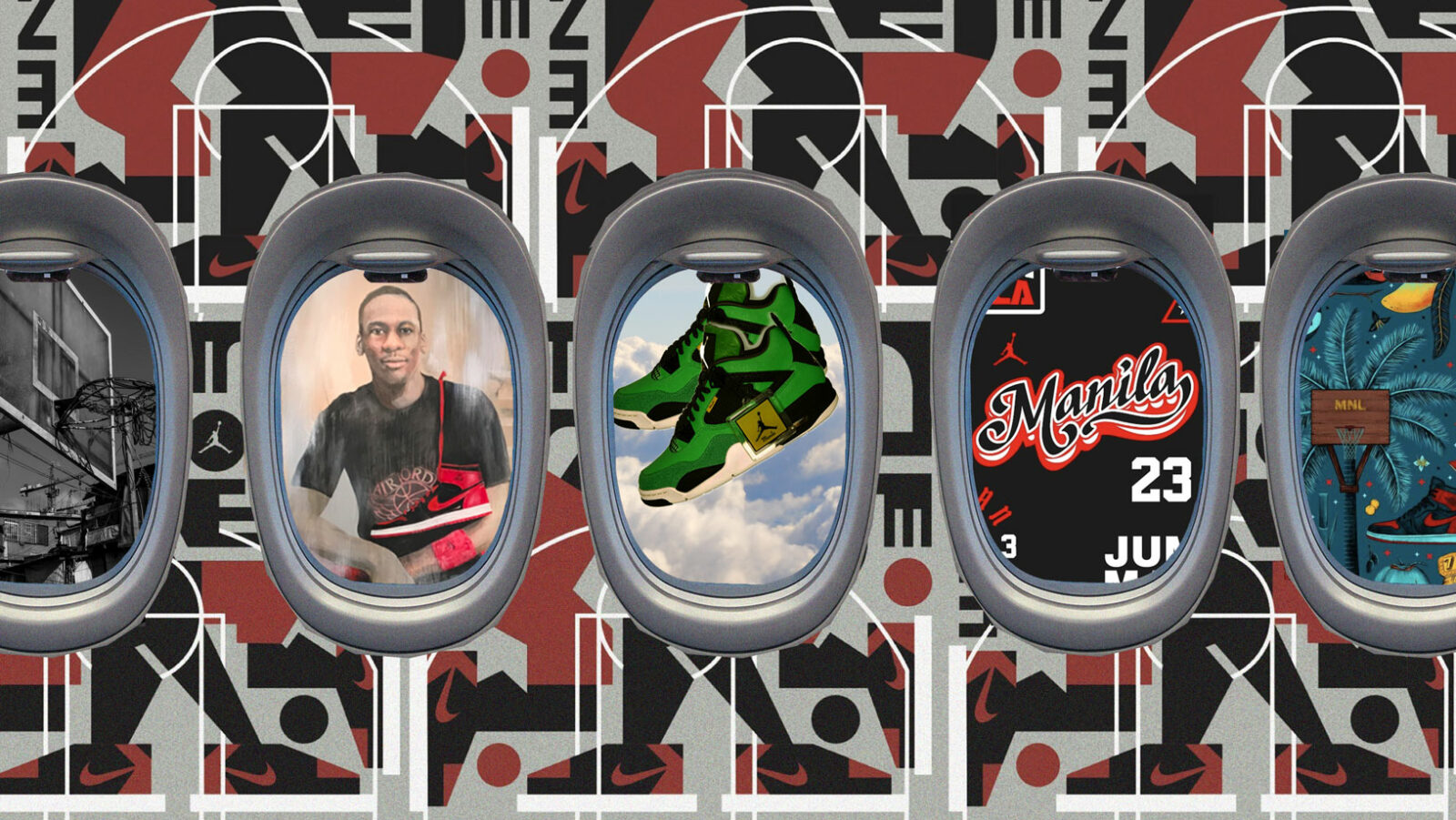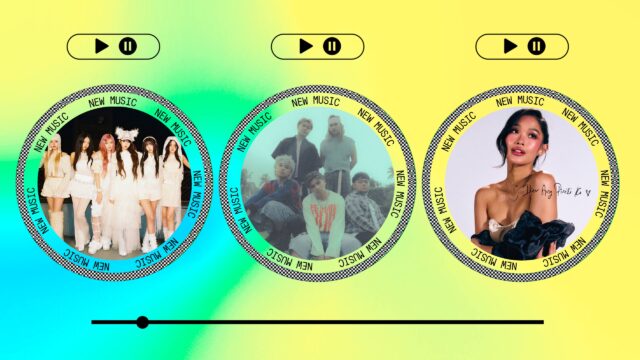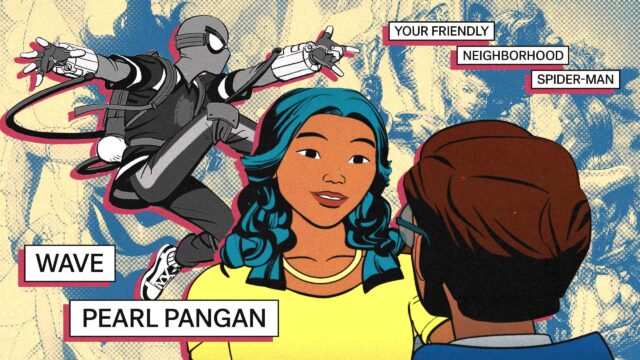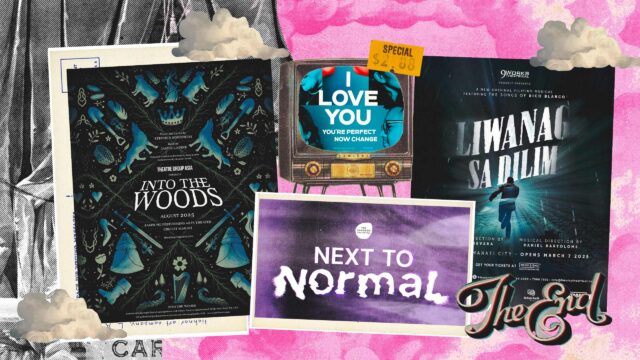Step into the court side in this NYLON exclusive.
For a while, Michael Jordan was the most photographed player in the 90s. The recent documentary on building the Chicago Bulls dynasty, The Last Dance, unraveled secrets from the most-watched athlete in sports history not only about his life in the game, but the way his influence stretched out into the world of entertainment, music, art, and even politics. He was the perfect muse to photograph and paint with almost no unflattering pictures to ever exist during his entire career. (Well, except maybe for his infamous crying meme years later.)
In honor of the new Jordan Store opening today, we spoke to five of the artists who shared the stories behind the art they’ve created in each part of the Jumpman’s first ever homecourt in Manila.
Related: A BASKETBALL STORY: THE GAME STAPLE JORDAN SCORES A FULL DUNK IN MANILA
RAXENNE MANIQUIZ
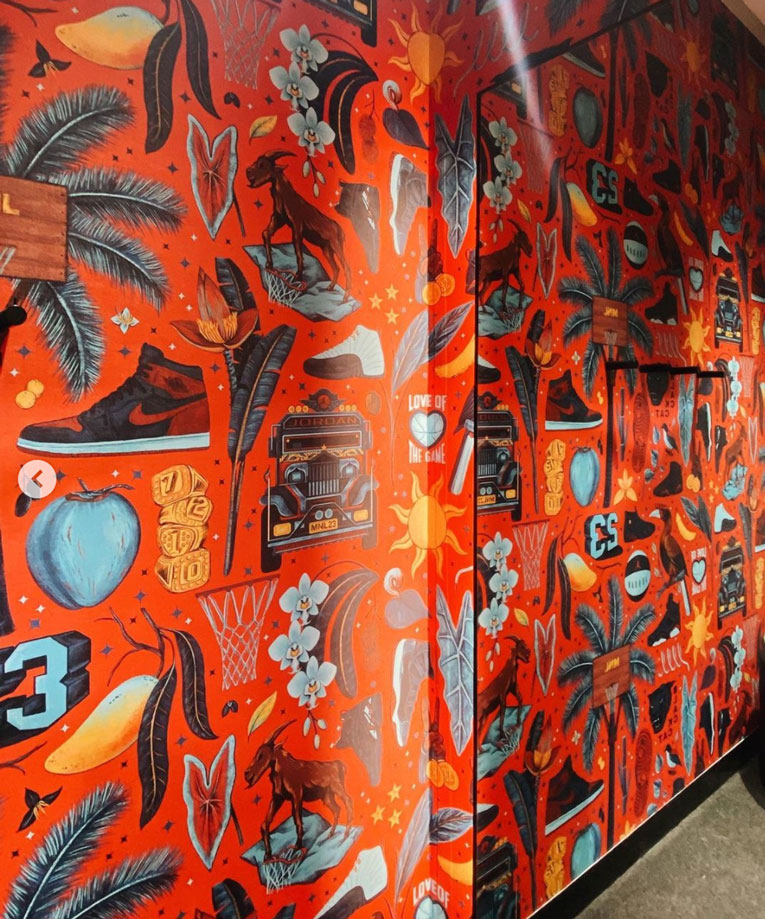
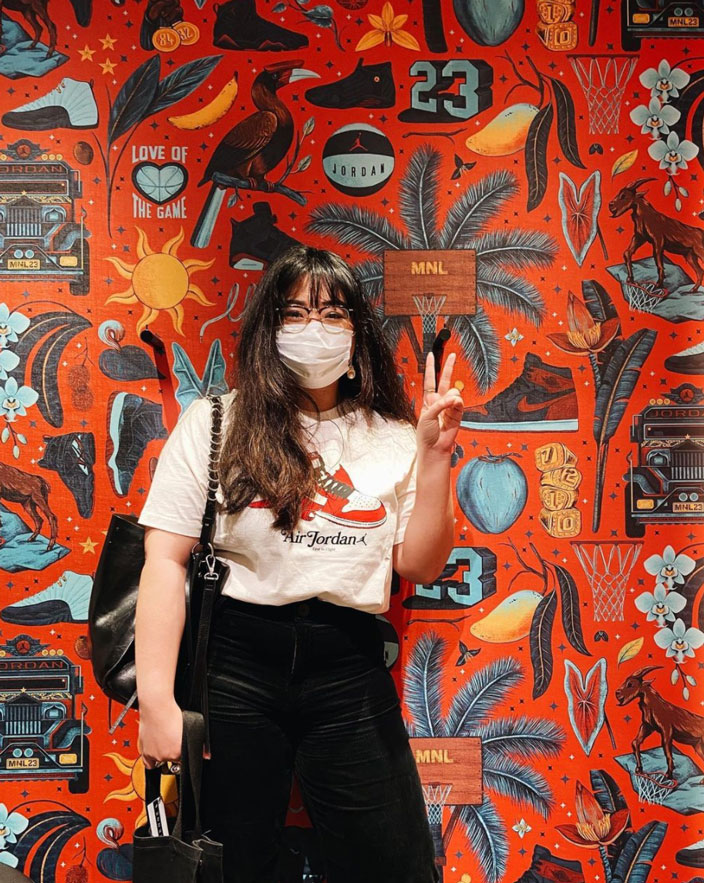
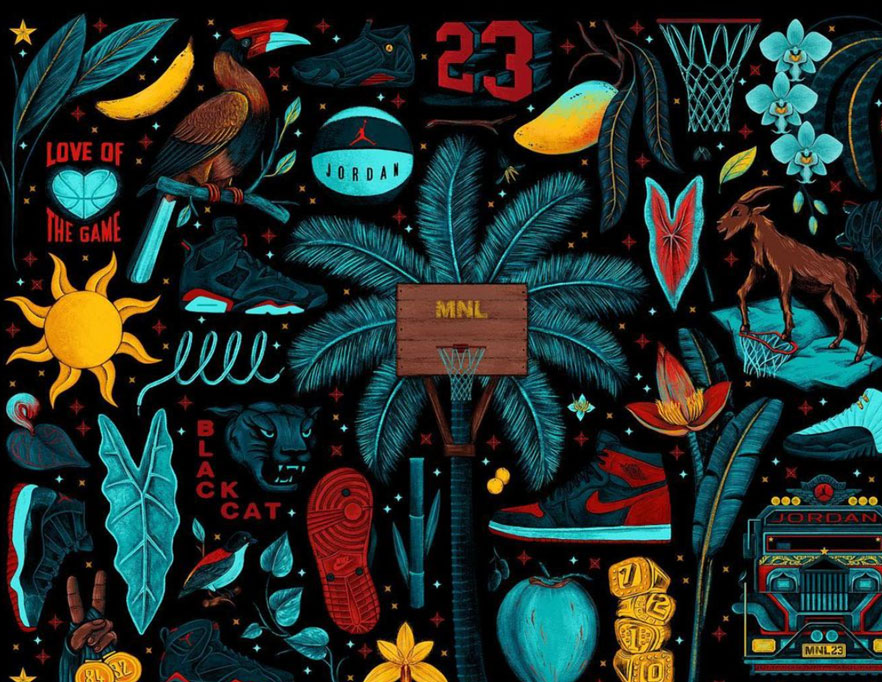
Known for her botanical-inspired illustrations, Raxenne Maniquiz never expected that she’d be able to create something for an iconic athlete that blends well with her floral designs. Raxenne shares, “I started by looking for references related to our local basketball street culture. That’s how the coconut tree with the backboard came about. I also included flora and fauna that are tropical, native, and some which are endemic and rare. Together with the assets of the Jordan brand, I combined all of these elements into one cohesive artwork. The colors are made up of the iconic red of the brand complemented with shades of cyan and yellow. A sun and three stars are also present as a nod to our flag.” Did anyone else spy the Jordan jeepney, too? You can spot Raxenne’s huge art piece in the fitting room hall.
AJ DIMARUCOT
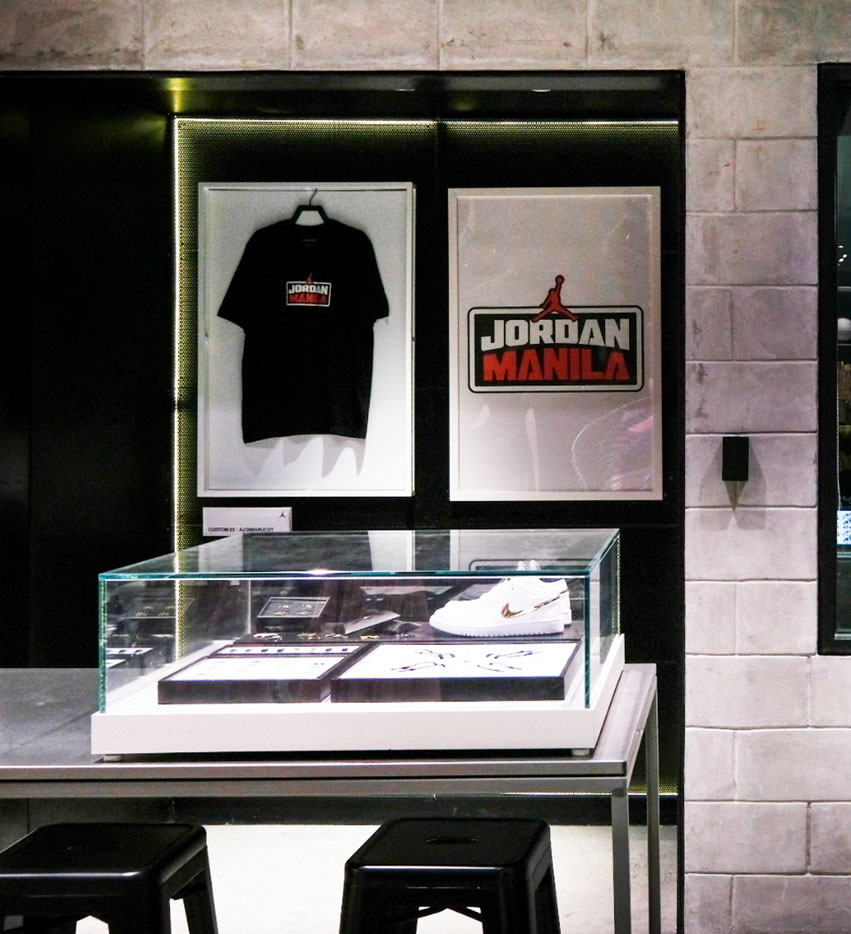
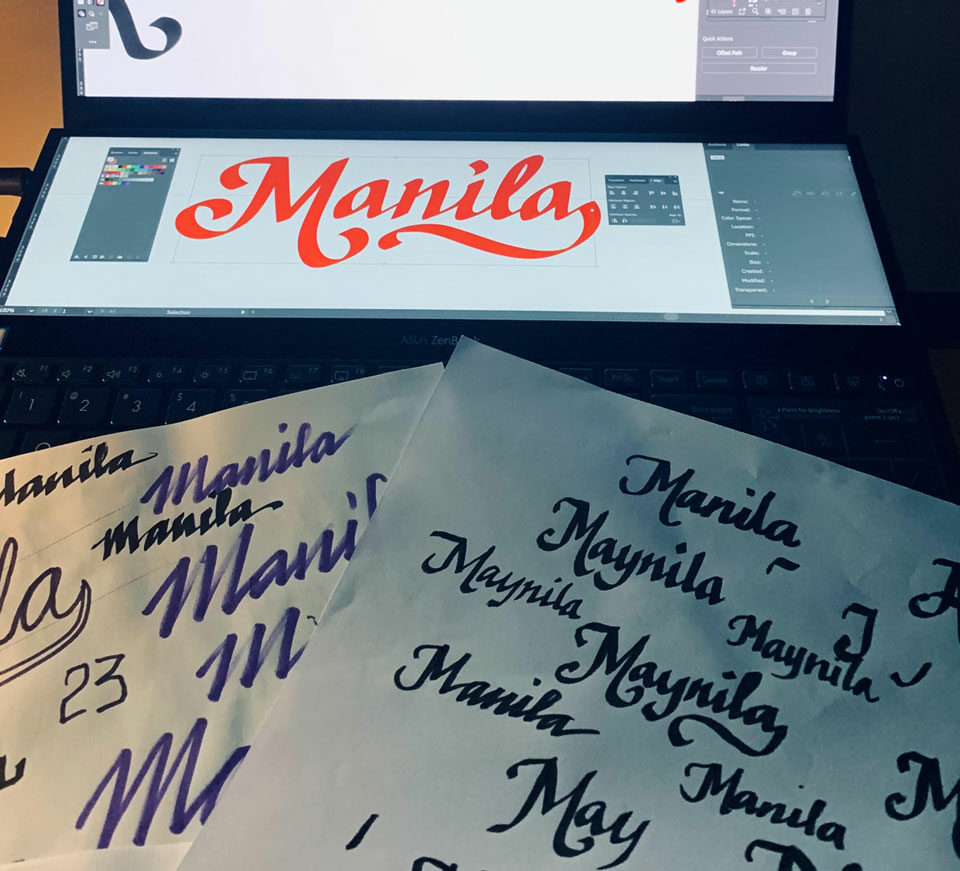
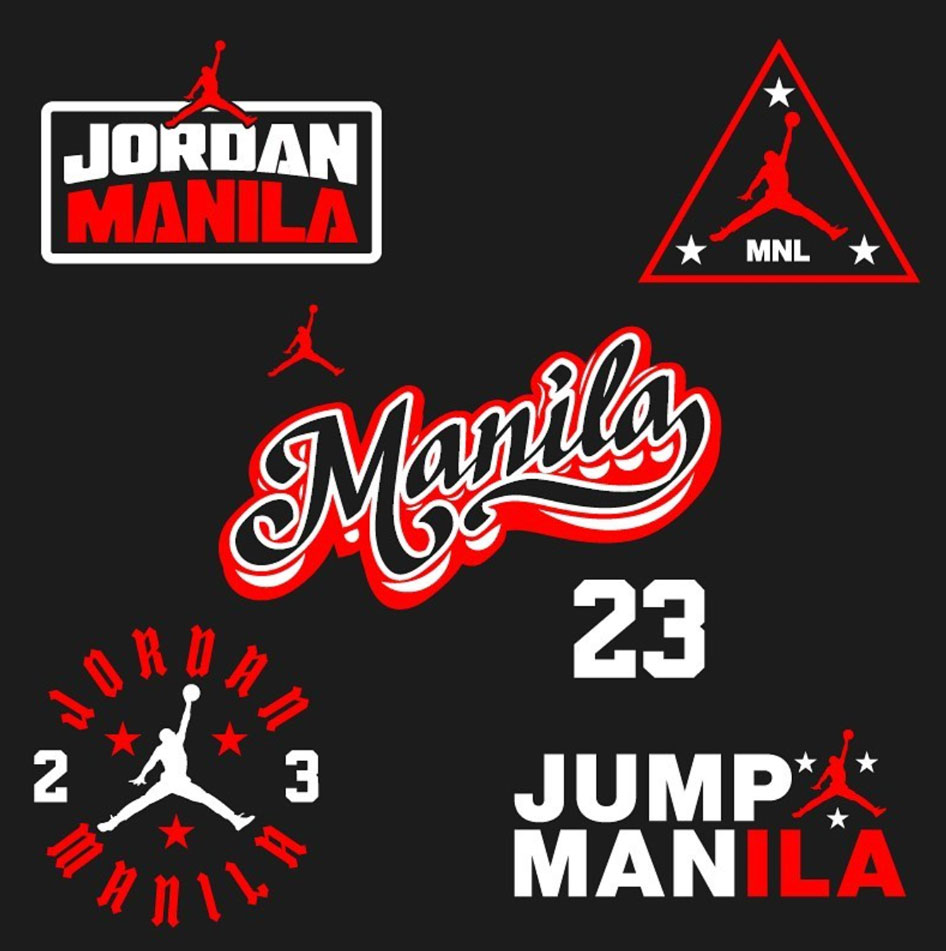
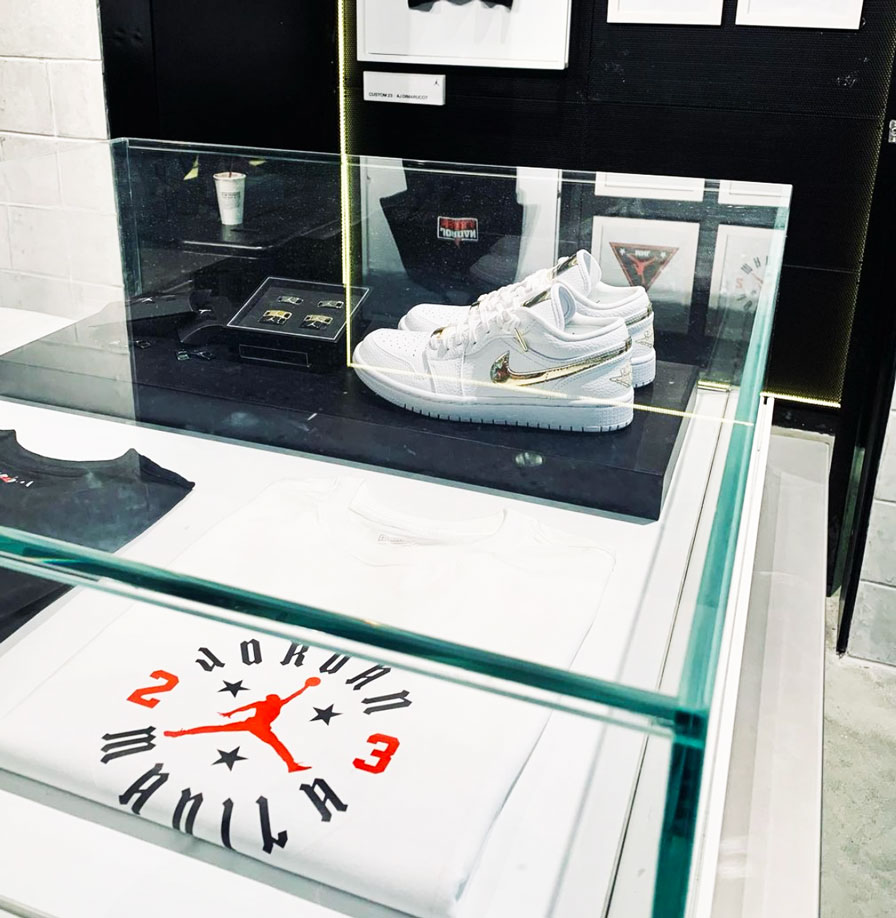
Since his early years, graphic designer AJ Dimarucot would watch Michael Jordan’s games on VHS back in the 80s—even when he still couldn’t afford to buy the shoes. After leaving college to finally pursue his dreams, he was able to work for international brands like Nike with his brash, color-awash style. “I’ve always dreamed of designing for Michael Jordan. But when Nike called me to design hyperlocal custom t-shirts for Jordan Manila, I felt like a little kid being called to play in the biggest game of his life in his homecourt,” AJ quips. A full circle moment, he combined elements of handmade Jeepney signages and the three stars of the sun with the Jumpman logo for his custom typeface.
VEEJAY VILLAFRANCA
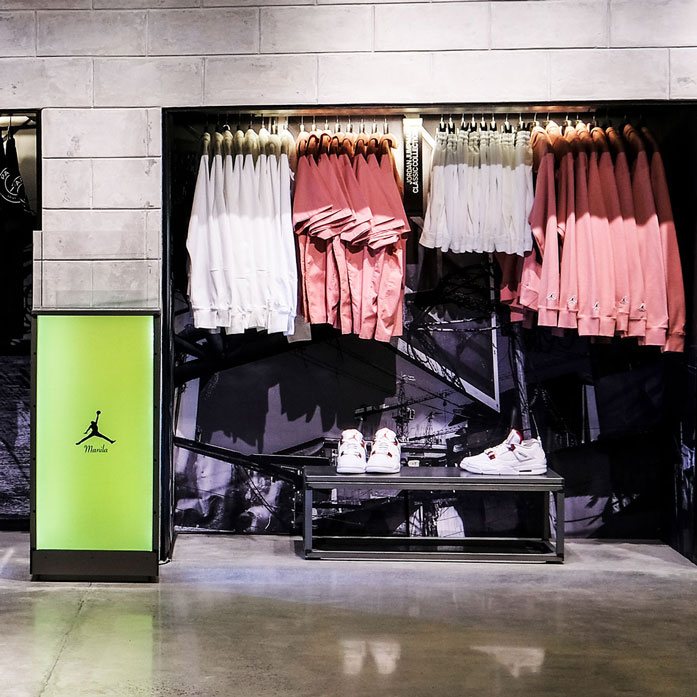
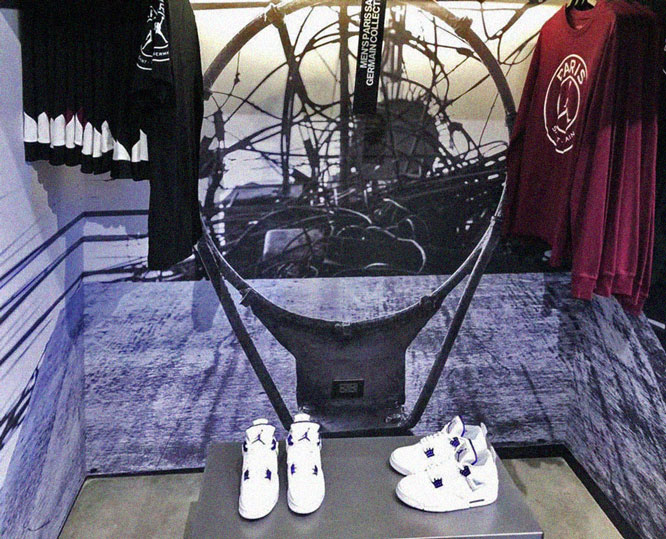
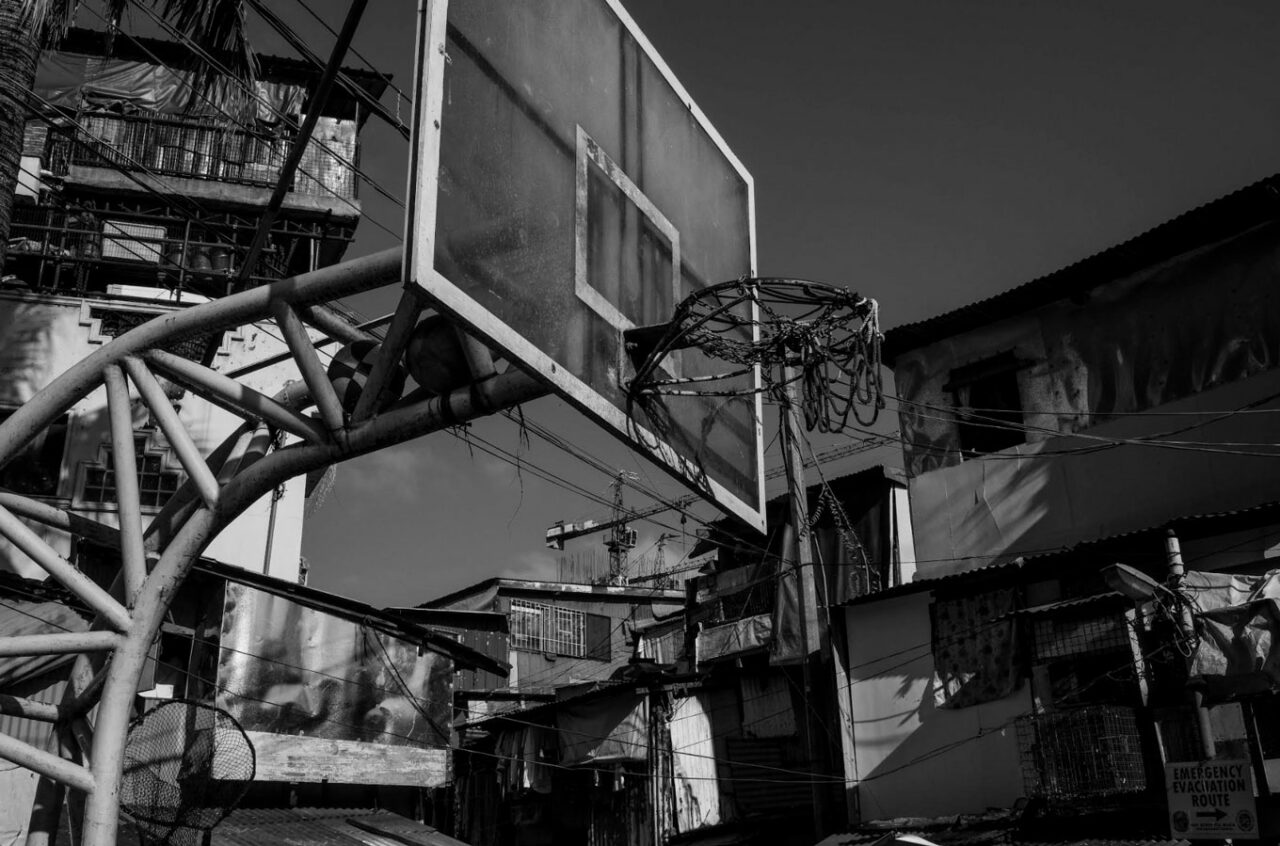
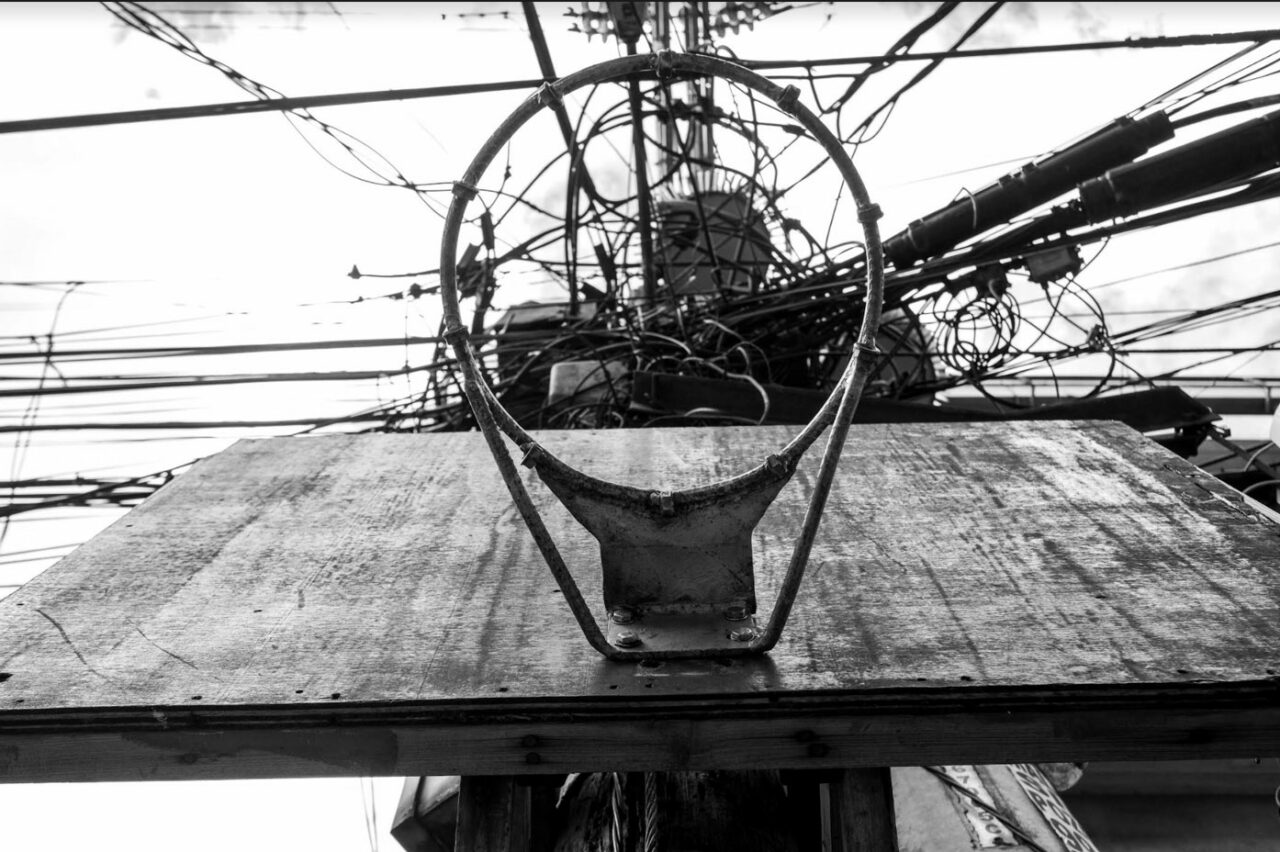
In his latest work, Lifeblood, visual journalist Veejay Villafranca captures a series of still life moments of Filipinos’ love for the game. “This series was inspired by the culture of basketball in the Philippines and how it has been part of the Filipino’s way of life for at least 60 years,” he shares. “As life around the world was put to a halt, the love for basketball and fervor to live a life beyond any difficulty can be seen through the basketball courts in Metro Manila and nearby provinces. The images seek to show that the soul of basketball isn’t only seen in big bright arenas nor flashy things that are associated with basketball, its soul belongs in the people who seek to play the sport whatever circumstance may be.”
JAIME PACENA II


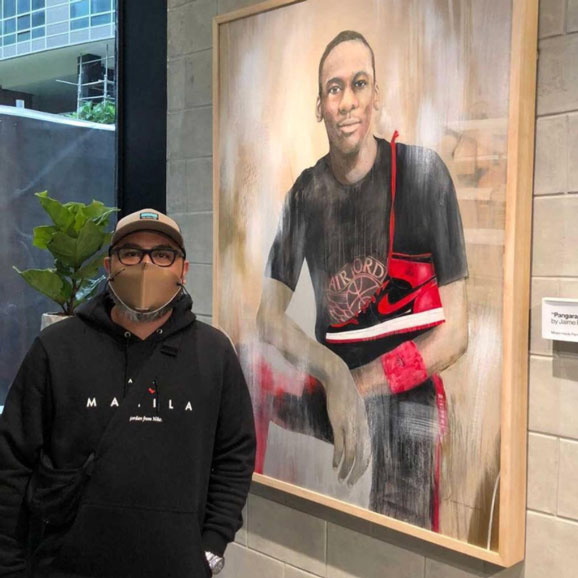
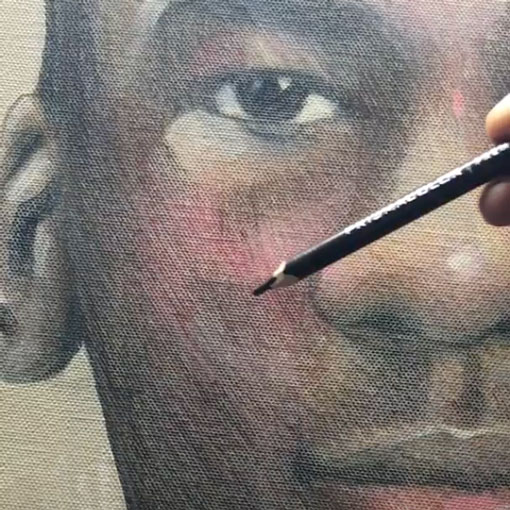
Jaime Pacena II is just one of those artists that were raised in the Jordan era, even painting his face with the Bulls Logo during their ’96 game with the Utah Jazz as he witnessed the infamous shot in the free throw line against Bryson Russell. In this Jumpman collab, Jaime painted one of the early images in Jordan’s career, sporting his first ever Js in 1985. “To do this for the brand is and will always be a representation of a dream coming true,” he shares. His painting, Pangarap or Dream, is an homage to his childhood hero. “This particular artwork is an opportunity for me not just as an artist but as an individual who loves the game of basketball…to pay homage to Jordan and what he made the game to everyone who followed his essence inside the court.”
KIMOU MEYER

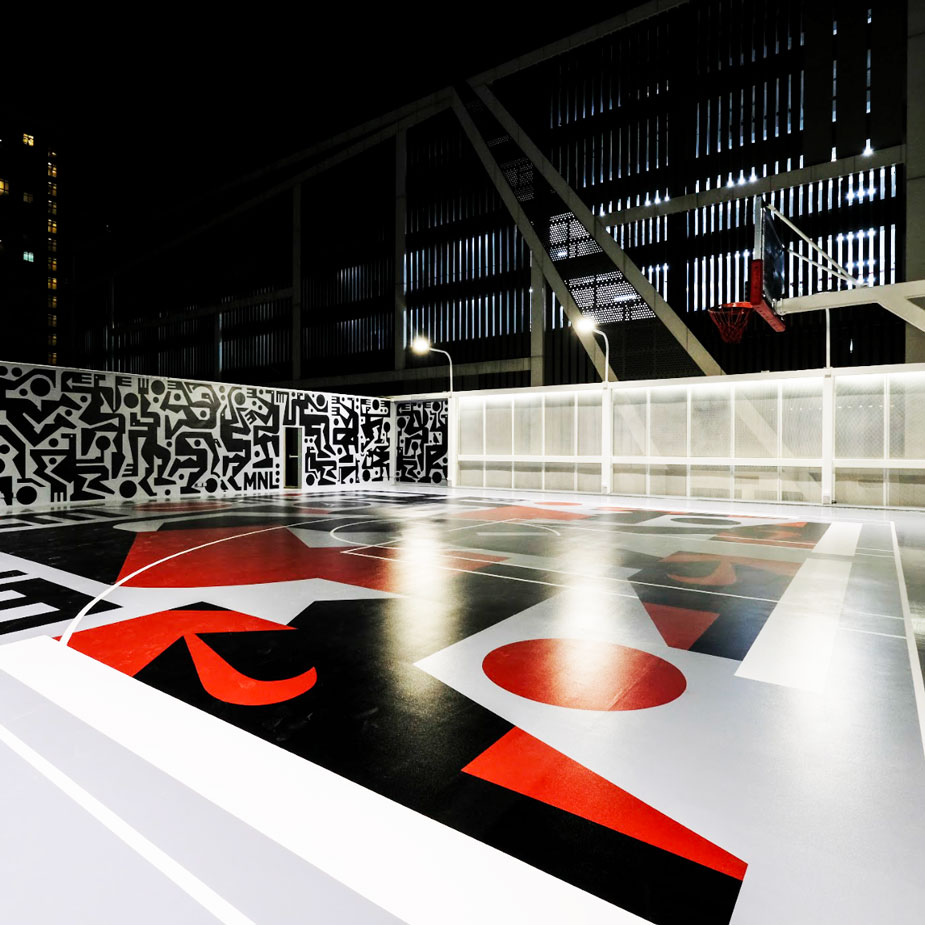
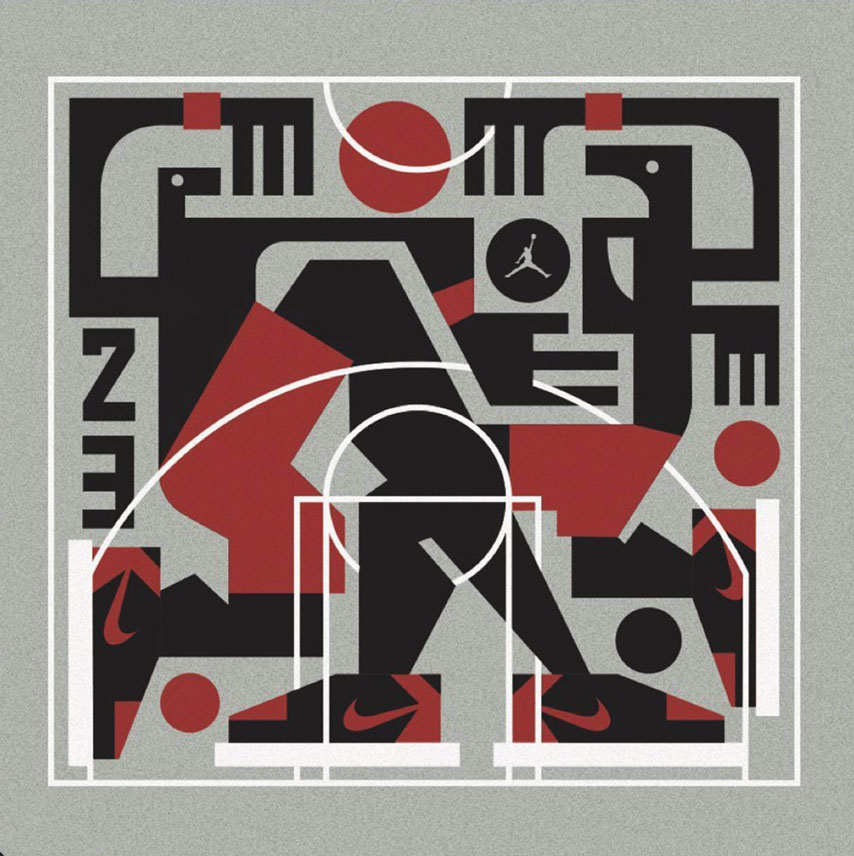
It’s a slam dunk for NYC-based Swiss artist and now Jumpman’s newest creative director, Kimou Meyer, creating an incredible eye-popping mural at the store’s rooftop court. Known as Grotesk, he fashioned the court in his signature cubism style, combining his love for retro cartoons, graffiti, and pop culture.
